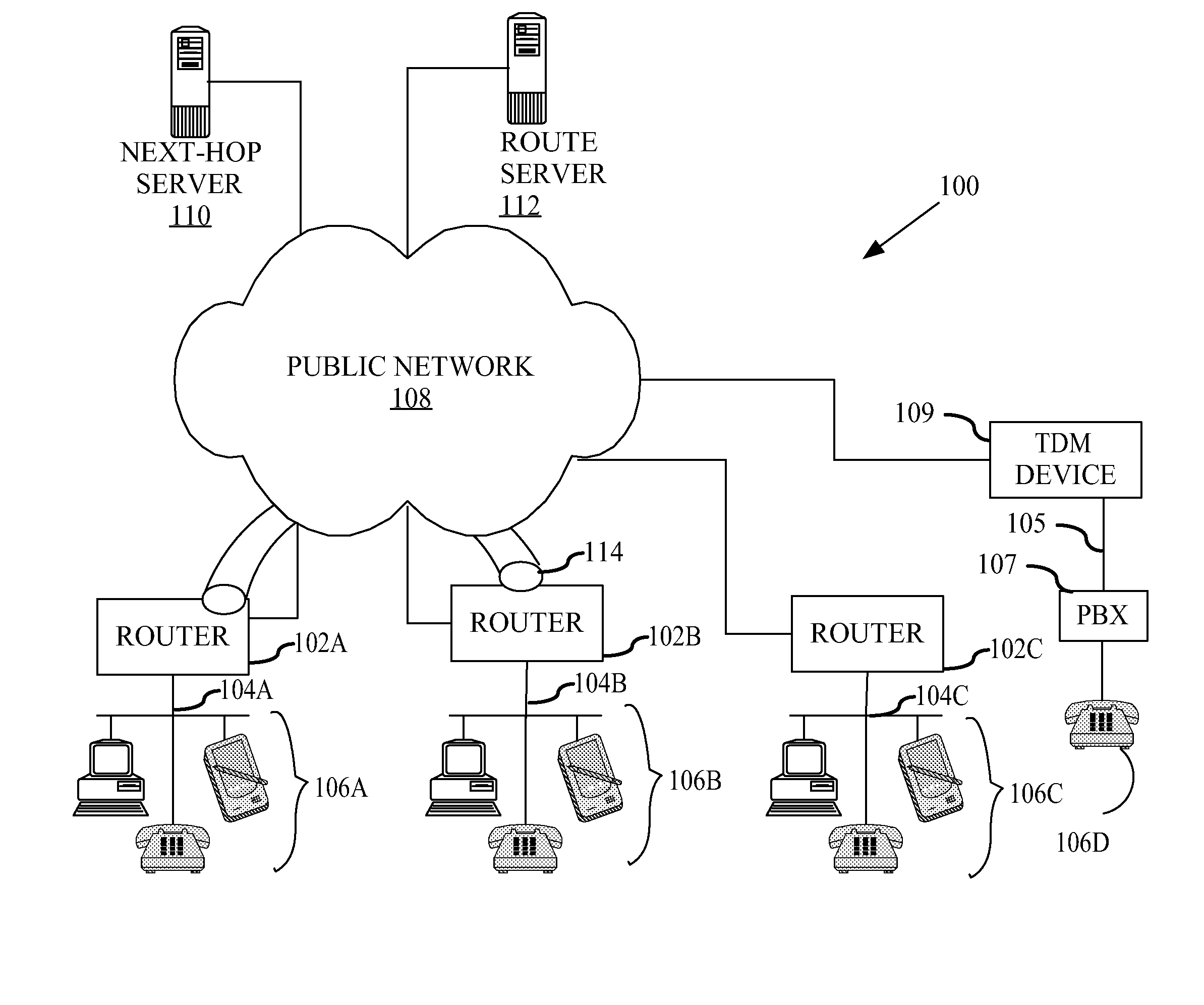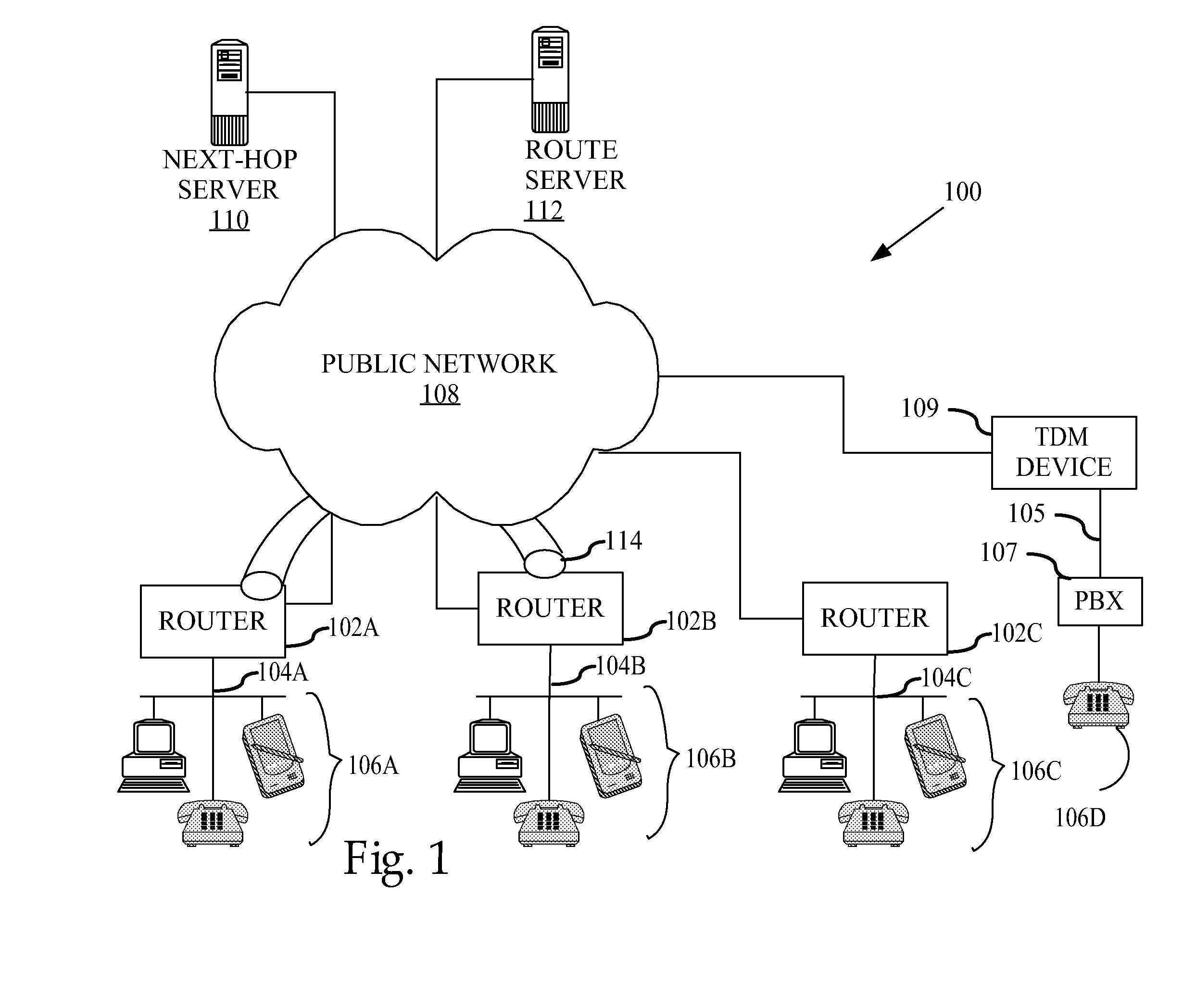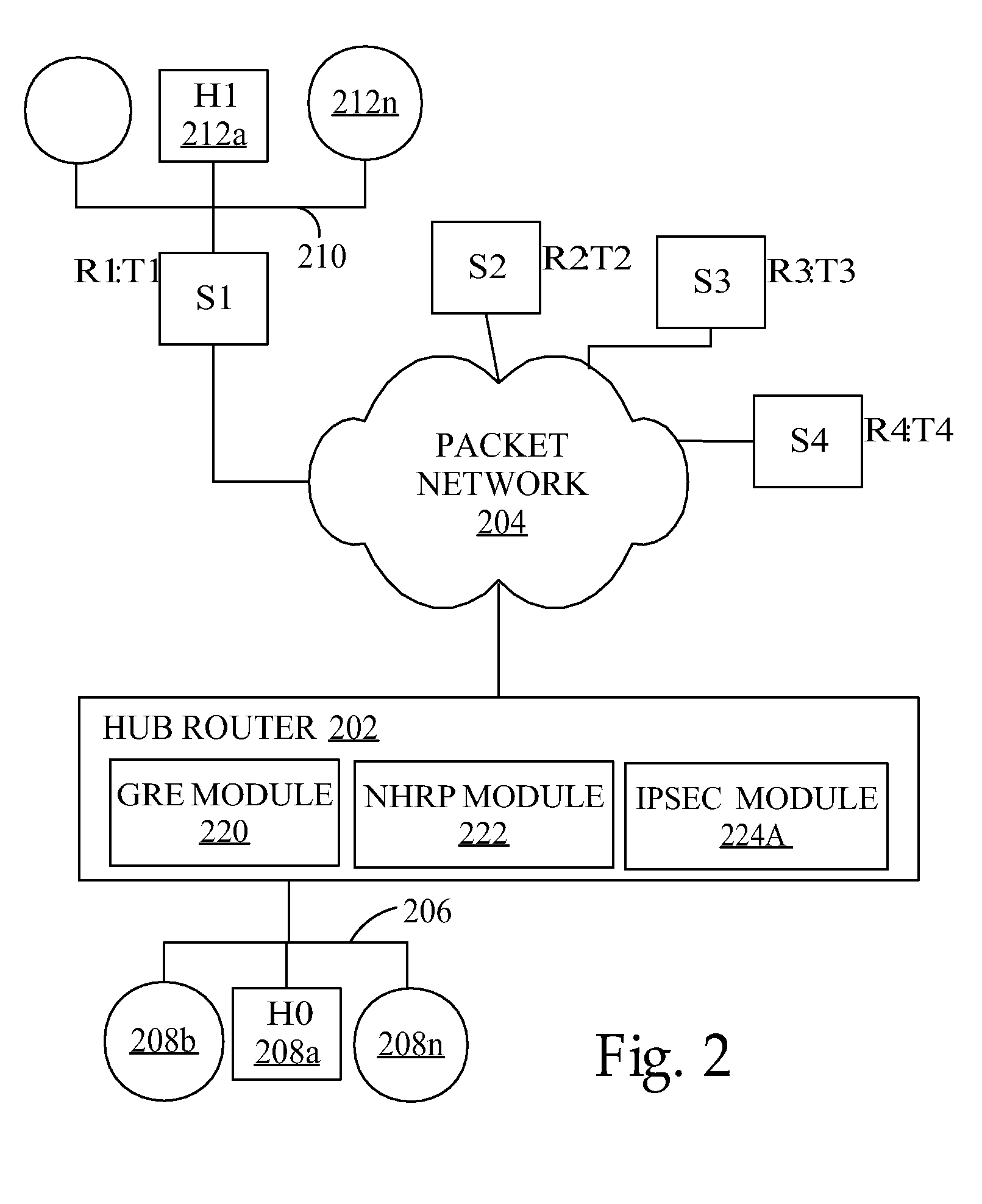Method and apparatus for dynamically securing voice and other delay-sensitive network traffic
a network traffic and dynamic security technology, applied in the field of communication networks, can solve the problems of increasing the latency of packets, increasing the load on the hub router, and ipsec not readily supporting ip multicast or broadcast packets
- Summary
- Abstract
- Description
- Claims
- Application Information
AI Technical Summary
Benefits of technology
Problems solved by technology
Method used
Image
Examples
Embodiment Construction
[0034]A method and apparatus for dynamically securing delay-sensitive network traffic are described. In the following description, for the purposes of explanation, numerous specific details are set forth in order to provide a thorough understanding of the present invention. It will be apparent, however, to one skilled in the art that the present invention may be practiced without these specific details. In other instances, well-known structures and devices are shown in block diagram form in order to avoid unnecessarily obscuring the present invention.
Overview
[0035]According to one aspect of the invention, a request for secure network traffic is received from a device having a private network address at a source node. The private network address of a requested destination device at a destination node is obtained from a route server, based on signaling information associated with the request. The public network address of the destination node associated with the private network addres...
PUM
 Login to View More
Login to View More Abstract
Description
Claims
Application Information
 Login to View More
Login to View More - R&D
- Intellectual Property
- Life Sciences
- Materials
- Tech Scout
- Unparalleled Data Quality
- Higher Quality Content
- 60% Fewer Hallucinations
Browse by: Latest US Patents, China's latest patents, Technical Efficacy Thesaurus, Application Domain, Technology Topic, Popular Technical Reports.
© 2025 PatSnap. All rights reserved.Legal|Privacy policy|Modern Slavery Act Transparency Statement|Sitemap|About US| Contact US: help@patsnap.com



